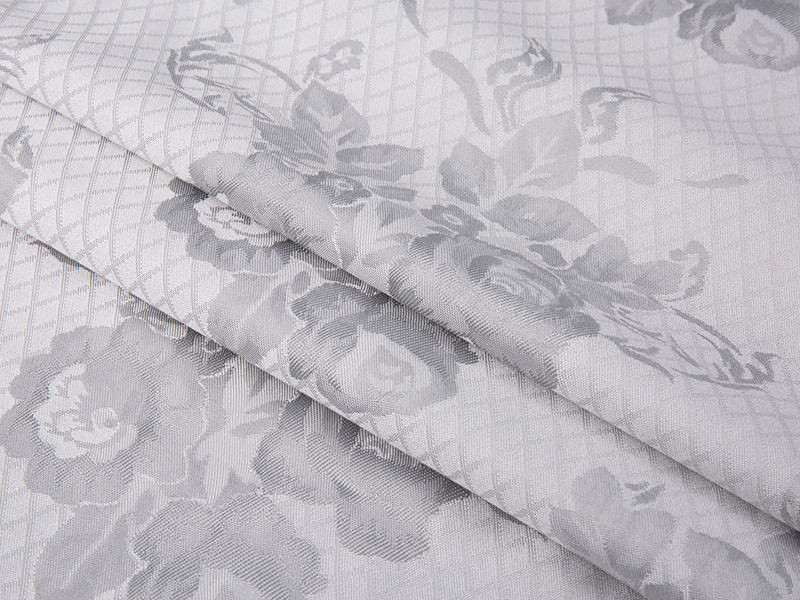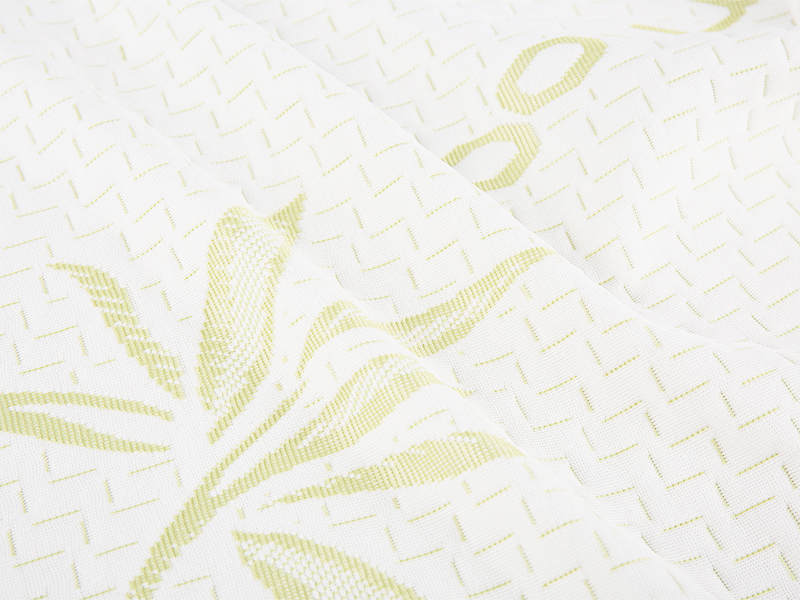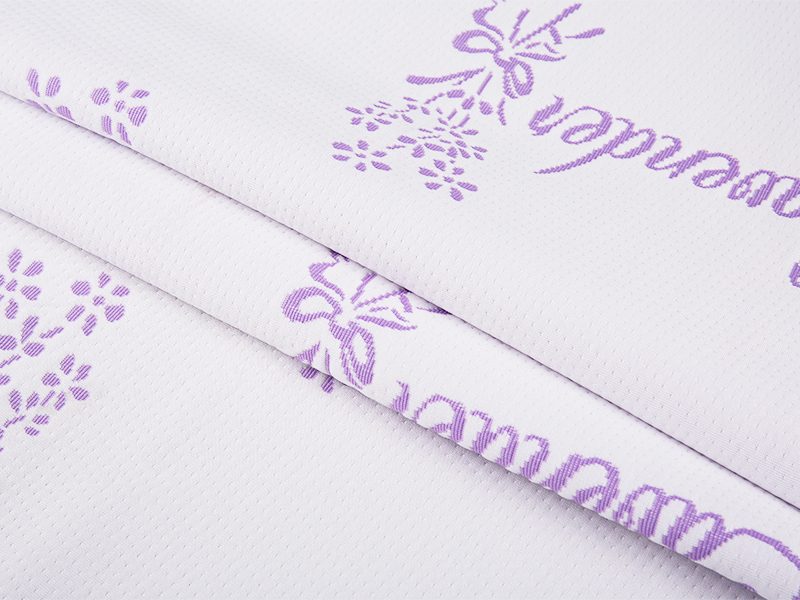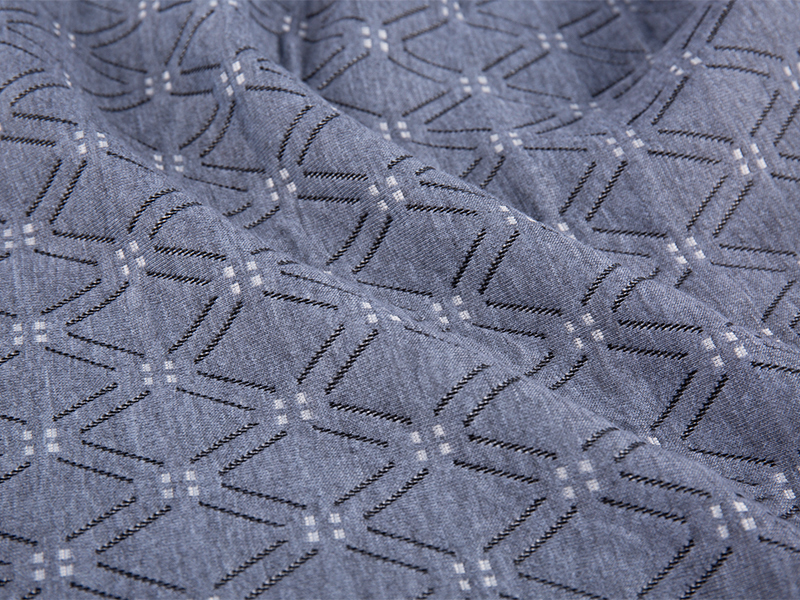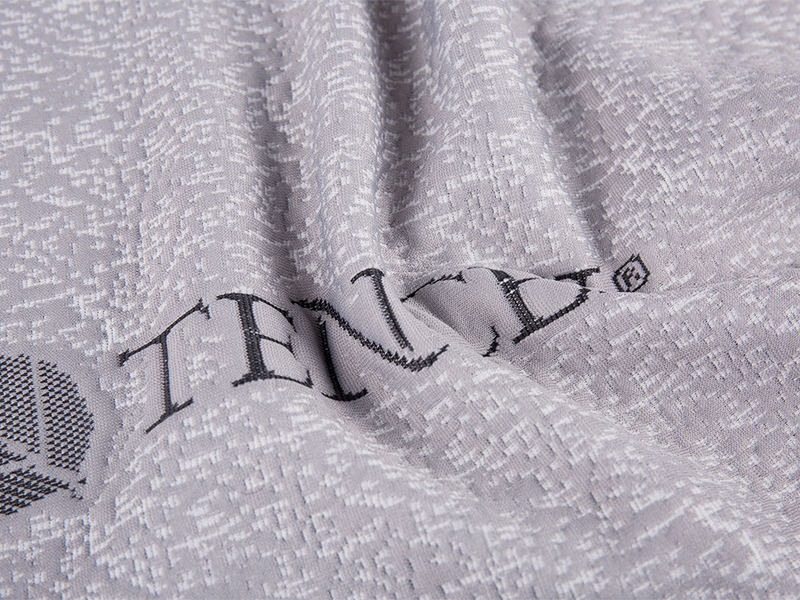Definition and Basic Characteristics of woven jacquard fabric
Understanding the weaving mechanism
- Uses a Jacquard loom to control individual warp threads for intricate patterns.
- Patterns are woven directly, not printed, ensuring durability and texture.
- Allows complex motifs, geometric designs, and floral patterns.
- Parameters to consider:
- Warp density: 150–400 threads per inch
- Weft density: 100–300 threads per inch
- Pattern repeat size: 5–50 cm
- Fabric weight: 150–600 g/m²
Key performance traits (woven jacquard fabric performance properties)
- Dimensional stability: low shrinkage after washing (<2%)
- Durability: abrasion resistance 30,000–50,000 rubs (Martindale)
- Color retention: excellent, maintains vibrancy after 20+ washes
- Texture: raised, tactile patterns with depth
- Care parameters:
- Wash temperature: 30–40°C recommended
- Ironing: medium heat, avoid high temperature on raised patterns
- Dry cleaning: suitable for premium upholstery
Typical Applications — From Home to Commercial Uses
Upholstery and Soft Furnishing (woven jacquard fabric for upholstery)
- Used for sofas, chairs, cushions, headboards, and curtains.
- Benefits: high abrasion resistance, elegant patterns, and premium look.
- Technical parameters:
- Fabric weight: 350–600 g/m²
- Martindale abrasion: 35,000–50,000 rubs
- Lightfastness: 5–7 (ISO 105-B02)
- Pilling resistance: Grade 4–5 (ISO 12945-2)
Light and Functional Textiles (lightweight woven jacquard fabric uses)
- Ideal for apparel overlays, lightweight curtains, and decorative elements.
- Combines breathability, flexibility, and intricate patterns.
- Key parameters:
- Fabric weight: 150–250 g/m²
- Warp density: 120–200 threads per inch
- Weft density: 80–150 threads per inch
- Drape coefficient: 0.45–0.55
Supplier and Customization Considerations
Choosing reliable custom woven jacquard fabric suppliers
- Evaluate supplier capabilities: loom type, design flexibility, and production volume.
- Check minimum order quantities (MOQ) and sample availability.
- Parameters for selection:
- MOQ: 500–1000 meters
- Lead time: 30–60 days for custom patterns
- Maximum pattern width: 150–300 cm
- Quality control: ISO9001, OEKO-TEX certifications
Sustainability and Eco‑friendly Threads (sustainable woven jacquard fabric options)
- Consider recycled, organic, or low-impact yarns.
- Eco-friendly dyeing methods reduce water and chemical usage.
- Parameters for sustainable fabrics:
- Material composition: 50–100% organic cotton or recycled polyester
- Water consumption reduction: up to 60% vs conventional dyeing
- Certifications: GOTS, OEKO-TEX, Bluesign
Performance Comparison Table
| Attribute | General Woven Jacquard | Lightweight Variant | Sustainable Option |
|---|---|---|---|
| Fabric weight | 350–600 g/m² | 150–250 g/m² | 200–500 g/m² |
| Durability | High (30,000–50,000 rubs) | Moderate (20,000–30,000 rubs) | Comparable (25,000–45,000 rubs) |
| Drape / Flexibility | Stiff | Soft / Fluid | Medium |
| Eco‑credentials | Standard | Standard | Enhanced (organic/recycled) |
| Cost | Baseline | Lower | Moderate to higher |
Summary of Advantages and Next‑Steps for B2B Buyers
- Woven jacquard fabric offers exceptional durability, texture, and design sophistication.
- Variants like **woven jacquard fabric for upholstery** excel in performance-critical applications.
- For lightweight needs, **lightweight woven jacquard fabric uses** balance elegance and comfort.
- Engaging **custom woven jacquard fabric suppliers** allows tailored solutions and MOQ flexibility.
- Choosing **sustainable woven jacquard fabric options** strengthens corporate responsibility messaging.
- Evaluate the **woven jacquard fabric performance properties** to match functional requirements.
- Next steps: request samples, compare suppliers, confirm lead times, plan pilot orders for quality assessment.
Frequently Asked Questions (FAQ)
1. What makes woven jacquard fabric suitable for both upholstery and lightweight applications?
- Woven jacquard fabric offers high durability, complex patterns, and flexibility in fabric weight and texture.
- For upholstery, heavier variants provide abrasion resistance and stability, while lightweight versions ensure drape and comfort for decorative applications.
- Hangzhou Xiaoshan RongLi Clothing Co., Ltd. produces both heavy and lightweight woven jacquard fabrics using advanced machinery from West Germany and Italy, ensuring high-quality and versatile solutions.
2. How can I customize woven jacquard fabric for my projects?
- You can work with suppliers to create tailored patterns, fabric widths, and materials according to your design needs.
- Factors such as warp/weft density, pattern repeat, and fabric weight can be adjusted for custom projects.
- Hangzhou Xiaoshan RongLi Clothing Co., Ltd. offers professional customization services, integrating design, production, R&D, and quality testing, with certifications including ISO9001:2000 and Oeko-Tex Standard100, ensuring compliance and excellence for all projects.
3. Are there sustainable woven jacquard fabric options available?
- Yes, sustainable fabrics use organic or recycled yarns, low-impact dyeing methods, and eco-friendly manufacturing processes.
- Sustainable options can maintain performance while supporting environmental responsibility.
- Hangzhou Xiaoshan RongLi Clothing Co., Ltd. produces eco-friendly woven jacquard fabrics and other home textile materials, meeting EU REACH standards and receiving international recognition, making them ideal for environmentally-conscious B2B buyers worldwide.


